
This infographic is made through AI depicting the best social media strategies. This infographic was made with Visme AI.
- Subject:
- Marketing
- Material Type:
- Diagram/Illustration
- Author:
- Caroline Watson
- Date Added:
- 07/10/2024

This infographic is made through AI depicting the best social media strategies. This infographic was made with Visme AI.

This resource is a video abstract of a research paper created by Research Square on behalf of its authors. It provides a synopsis that's easy to understand, and can be used to introduce the topics it covers to students, researchers, and the general public. The video's transcript is also provided in full, with a portion provided below for preview:
"Metagenomic analysis frequently plays an important role in development pipelines for human fecal microbiome-related products, but validation and standardization of the methods used to extract DNA and assemble sequence libraries for these studies is currently lacking. To close this gap, researchers recently characterized existing protocols for accuracy and precision. First, they tested the quantification accuracy by using a defined mock community of bacteria. Then, the protocols that performed as expected were evaluated for both within- and inter-laboratory precision metrics. The protocols were also tested against the MOSAIC Standards Challenge samples. Lastly, they defined performance metrics for the recommended protocols to provide best-practice guidance. The uptake of the recommendations generated here should improve reproducibility in human metagenomic research and therefore facilitate development and commercialization of human microbiome-related products..."
The rest of the transcript, along with a link to the research itself, is available on the resource itself.
![Better Than the V.C. [i.e., Victoria Cross]](https://img.oercommons.org/160x134/oercommons/media/upload/materials/screenshots/materials-course-93132.png)
Poster showing a soldier holding a baby, as he follows his wife. Title from item. 35793 528 2000 12/18 W.G. & S.
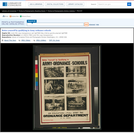
Poster showing six scenes of ordnance school education. Poster captions: A class in acetylene welding ; Storing ammunition ; Lathe work ; Mobile equipment repair truck ; Class in theoretical optics ; A class studying the range finder. Ordnance recruiting poster no. 3. A.G.O. No. 201 - July 21, 1919.

This resource is a video abstract of a research paper created by Research Square on behalf of its authors. It provides a synopsis that's easy to understand, and can be used to introduce the topics it covers to students, researchers, and the general public. The video's transcript is also provided in full, with a portion provided below for preview:
"Brain scans are powerful tools for diagnosing disease, monitoring treatment, and conducting basic biological research. But slight head movements can impair image quality. Now, researchers have devised an improved method to significantly reduce this problem for a dual scanning technique called magnetic resonance – positron emission tomography, or MR-PET. Magnetic resonance, the basis of MRI scanning, builds images from the response of selected atoms in the body to radio waves under a strong magnetic field. Positron emission tomography, PET, builds images by detecting particles called positrons released by radioactive tracers after they are allowed to spread through the body. MR-PET combines the two techniques, offering advantages over either alone. But it takes a long time, as much as 90 minutes, to acquire the data to create MR-PET images. So, image-blurring artefacts and quantitative errors due to head movements can become a problem..."
The rest of the transcript, along with a link to the research itself, is available on the resource itself.
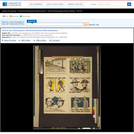
Poster showing a soldier and an officer saluting. Service Series no. 13. Mounted with other Service Series posters. Title from item.

Poster is text only. Title from item.

This resource is a video abstract of a research paper created by Research Square on behalf of its authors. It provides a synopsis that's easy to understand, and can be used to introduce the topics it covers to students, researchers, and the general public. The video's transcript is also provided in full, with a portion provided below for preview:
"HIV infection remains unacceptably common among women in sub-Saharan Africa. One possible contributing factor is the composition of the vaginal microbiota, as African, Caribbean and other Black (ACB) women have an increased rate of bacterial vaginosis (BV), which is associated with increased HIV risk. Targeting the vaginal microbiota and treating BV could help prevent HIV among women. In the absence of BV, the vaginal microbiota is predominated by one of several _Lactobacillus_ species that provide different levels of BV and HIV protection. _L. crispatus_ is associated with exclusion of BV-associated bacteria and reduced HIV risk while _L. iners_, the most common species among ACB women, seems less protective. The reduced protection provided by _L. iners_ is supported by genomic differences, such as the absence of a gene encoding an HIV-trapping D-lactate isomer and the presence of genes encoding pro-inflammatory cytotoxins..."
The rest of the transcript, along with a link to the research itself, is available on the resource itself.

This resource is a video abstract of a research paper created by Research Square on behalf of its authors. It provides a synopsis that's easy to understand, and can be used to introduce the topics it covers to students, researchers, and the general public. The video's transcript is also provided in full, with a portion provided below for preview:
"Learning something new not only changes our perspectives and behavior – it actually changes the structure of our brains. Memories and experiences are recorded in the brain by altering the physical connections between neurons. Until recently, however, the protein signals that cause these tiny structural changes were too small to measure with available imaging methods. But researchers at the Max Planck Florida Institute for Neuroscience created ultra-sensitive sensors and revealed the activity of two of the proteins that write memories into neural circuits in the brain. Individual neurons have many branches, or dendrites. And each dendrite can be covered with thousands of tiny bumps called spines, where messages are received from other neurons. Changes in spine size are one way memories are recorded-when lots of messages are being passed and a spine is very active, it gets bigger. Many proteins need to be activated to make spines grow..."
The rest of the transcript, along with a link to the research itself, is available on the resource itself.
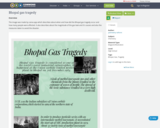
The image was made by canva app which describes about when and how did the Bhopal gas tragedy occur and how many people were affected. It also describes about the magnitude of the gas leak and it's causes and also the measures taken to avoid the disaster.
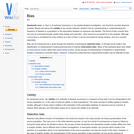
Systematic error, or 'bias' is of particular importance in any epidemiological investigation, and should be avoided wherever possible. Biases will reduce the validity of any results obtained, whether it be by overestimating or underestimating the frequency of disease in a population or the association between an exposure and disease. The forms of bias covered here can only be minimised through careful study design and execution - they cannot be accounted for in the analysis. Although confounding is considered by many authors as a form of bias, it can be accounted for during analysis, and so is covered separately.

This resource is a video abstract of a research paper created by Research Square on behalf of its authors. It provides a synopsis that's easy to understand, and can be used to introduce the topics it covers to students, researchers, and the general public. The video's transcript is also provided in full, with a portion provided below for preview:
"There’s a new contender in the battle for gender equality. An international team of researchers has recently uncovered an obstacle that those working in academia have unknowingly endured for decades: a bias against _research_ on gender bias. Just as female academics must navigate underrepresentation, wage gaps, and difficulties in obtaining grant funding, it seems that individuals _researching _these topics also face a lack of appreciation for their work. To reach this conclusion, the team performed an extensive analysis of articles on gender discrimination published between 2008 and 2015. For each article, they assessed two criteria related to peer review: the impact factor and whether grant support was received. To truly understand how these articles fared amidst the broader context of social science research, however, the team needed a suitable point of reference in the field. For this, they turned to articles on racial bias, which use methods and paradigms similar to those employed in gender studies..."
The rest of the transcript, along with a link to the research itself, is available on the resource itself.

A reflection on museums.

In this history lesson, students learn about the epic life and exemplary character of Biddy Mason, a woman who was born into slavery in the Deep South, walked to California as part of a pioneer caravan, fought for her freedom in court, and died a millionaire real-estate investor in Los Angeles. In addition to the highs and lows of Biddy’s dramatic life, this lesson asks students to study how she demonstrated the virtues of courage and charity, both in securing freedom for herself and her family and, later, using her fortune to invest in her community and provide relief to poor Californians of all races and religions.
The Woodson Center's Black History and Excellence curriculum is based on the Woodson Principles and tells the stories of Black Americans whose tenacity and resilience enabled them to overcome adversity and make invaluable contributions to our country. It also teaches character and decision-making skills that equip students to take charge of their futures. These lessons in Black American excellence are free and publicly available for all.

Another swipe at Whig candidate Winfield Scott's manipulation by antislavery Whigs Seward and Greeley. Here, Scott is a fly caught in a large web, spun by spiders Greeley (left) and Seward (right). Scott exclaims, "I think I've got myself into a hobble!" Greeley, hanging from a thread, decides, "I must hurry up & cover him with our slime as fast as possible!" Seward adds, "I hope he won't break through before I get him secured!" At lower left, Massachusetts Whig Daniel Webster and New York editor James Watson Webb look on. Webster remarks, "What an extraordinary web, Webb!" Webb replies, "Yes it's one of that crafty old spider Seward's and he has caught a large fly who wont get out Scot free--Can't you stir it up a little, Webster!"|Published by John Childs, 84 Nassau St. N. York.|Signed with monogram: EWC (Edward Williams Clay).|Title appears as it is written on the item.|Davison, no. 204.|Weitenkampf, p. 107.|Forms part of: American cartoon print filing series (Library of Congress)|Published in: American political prints, 1766-1876 / Bernard F. Reilly. Boston : G.K. Hall, 1991, entry 1852-30.

Poster showing Uncle Sam firing a cannon "American industry," which is shooting supplies and munitions to "The Allies" on a distant shore. "Wage earner" and "Wage payer" look on. Title continues: In war - industrial peace will prove more profitable than strife. In peace - industrial strife will prove a loss to wage payers, wage earners and the community which permits it. In time of war prepare for peace. Issued by the National Industrial Conservation Movement, 30 Church Street, New York City. Copies supplied on request. No. E-12.
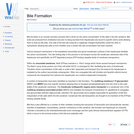
Bile formation is an osmotic secretory process that is driven by the active concentration of bile salts in the bile canaliculi. Bile acids are produced from cholesterol and prior to being excreted from hepatocytes are bound to specific amino acids allowing them to exist as bile salts. One side of the bile salt molecule is negatively charged (hydrophilic) whilst the other is hydrophobic allowing bile salts to form micelles once a certain bile salt concentration has been reached.
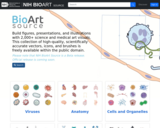
Build figures, presentations, and illustrations with 2,000+ science and medical art visuals. This collection of high-quality, scientifically accurate vectors, icons, and brushes is freely available within the public domain.

This resource is a video abstract of a research paper created by Research Square on behalf of its authors. It provides a synopsis that's easy to understand, and can be used to introduce the topics it covers to students, researchers, and the general public. The video's transcript is also provided in full, with a portion provided below for preview:
"The gut microbial community, called the gut microbiota, plays an important role in health for both humans and animals. The bacterial members of this community are the most numerous and consequently get the most attention in research. However, there are often overlooked but important fungi, viruses, archaea, and protozoa in the microbiota too. The fungal subset of a microbiota is called the mycobiota, and it is particularly understudied in birds. To close this gap, a recent study comprehensively characterized the mycobiota of chickens bred for meat. While gut bacterial communities typically stabilize with age, the chicken mycobiota was dynamic over time with no clear pattern of successive changes and low overall diversity. The upper gastrointestinal (GI) tract mycobiota was more diverse than the lower tract mycobiota, and just 25 core fungal groups accounted for more than 85% of the fungal population in each section of the GI tract..."
The rest of the transcript, along with a link to the research itself, is available on the resource itself.
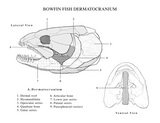
These anatomical illustrations were created by Biological and Pre-Medical Illustration (BPMI) students that had previously attended the course, BIOL351: Comparative Chordate Anatomy. The students worked closely with the lab instructor to develop detailed anatomical illustrations of the specimens studied in the lab, which allowed the students to showcase their work. The images were then incorporated in the lab handbook for the course and made more widely available as open educational resources.